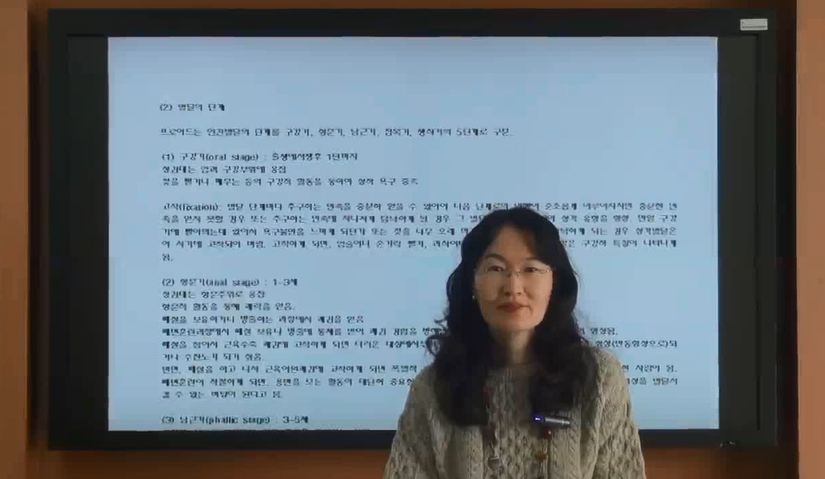Focusing on Pym’s dream-like experience in Edgar Allen Poe’s The Narrative of Arthur Gordon Pym Nantucket (Pym), several scholars have posited that the story is about the search for unity. However, instead of simply reading the tale as the search ...
http://chineseinput.net/에서 pinyin(병음)방식으로 중국어를 변환할 수 있습니다.
변환된 중국어를 복사하여 사용하시면 됩니다.
- 中文 을 입력하시려면 zhongwen을 입력하시고 space를누르시면됩니다.
- 北京 을 입력하시려면 beijing을 입력하시고 space를 누르시면 됩니다.
https://www.riss.kr/link?id=A99528045
- 저자
- 발행기관
- 학술지명
- 권호사항
-
발행연도
2011
-
작성언어
-
- 주제어
-
KDC
840
-
자료형태
학술저널
-
수록면
91-106(16쪽)
- 제공처
-
0
상세조회 -
0
다운로드
부가정보
다국어 초록 (Multilingual Abstract)
Focusing on Pym’s dream-like experience in Edgar Allen Poe’s The Narrative of Arthur Gordon Pym Nantucket (Pym), several scholars have posited that the story is about the search for unity. However, instead of simply reading the tale as the search for unity by way of Pym’s death, it is also possible to interpret the story as the fragmented, split, and penetrated subject’s longing to return to the unified subject: “$ to S.” Lacan believes that the fragmented subject ($) appears in the world when the subject is separated from the Mother (S). For this, Lacan, following Freud’s argument, suggests that the subject’s separation from the Mother results in the birth of language. He believes that the subject is created only in the network of signifiers; however, a newly created subject disappears when one signifier is substituted for another. In other words, one subject enters the world and, at the same time, it disappears by another “signifier.” Thus, I, based on Lacan’s argument, want to suggest that Pym reveals not only the fragmented subject’s yearning for the reunion with the Mother, but also the subject’s failure to reunite with the Mother. No matter how the fragmented subject tries to reach the Mother, the fragmented subject cannot be reunited with the unified subject. Yet it would be unwise to merely say that Pym’s failure to reunite with the Mother denotes the fragmented subject’s failure to be the unified subject. Rather, I will suggest that the failure of Pym as the fragmented subject-the subject’s separation from the Mother-in fact signifies the fragmented subject’s entrance into the Symbolic represented as language. Pym’s story begins with the fragmented subject and also ends with the same fragmented subject, not with the unified subject. As Pym embarks on his first journey by taking a ship, he also finishes his journey in a boat. The ships the Ariel, the Grampus, the Jane Guy, and the ship, which rescues Pym at the end of the story are also signifiers themselves. Whenever Pym gets on those ships to continue his journey toward the Mother, he is simply on signifiers consisting of the chain of signifiers. As the signifiers are floating away on the sea of indeterminacy, the ships are always replaced by other ships and slide away without the fixed quilting point. As long as Pym continues on his journey, he is always replaced by another and deceived, and his ship is also replaced by another ship. Pym never returns to the Mother. To some degree, Pym’s survival from the near-death experience seems to emphasize Pym’s failure to be reunited with the Mother. Nevertheless, Pym’s failure should be understood as the fragmented subject’s entrance into the Symbolic represented as language. For Lacan, the reality of human beings consists of three interwoven levels: the Imaginary (pre-verbal register), the Symbolic (linguistic dimension, or, more correctly, the chain of signifiers), and the Real (beyond language, or the reality that the subject must assume but, at the same time, can never know). After returning to his home, Pym-under the condition that Mr. Poe writes the early portion of his adventures and, in turn, Pym, without revealing his true identity, takes over the rest-agrees to write a story about his adventures. Pym is the narrator of this tale, but, at the same time, Pym is not the real narrator. This double-meaning reinforces the concept of méconnaissance, the child’s misrecognition of the reflected image as his self; therefore, Pym’s use of a pseudonym connotes his entrance into the Symbolic. In this regard, Poe’s Pym shows not only the fragmented subject’s desire for the Mother but also the fragmented subject’s entrance into the Symbolic.
동일학술지(권/호) 다른 논문
-
Compass and Cartography: Early Global Exploration and John Donne’s Writing
- 중앙대학교 영미언어와문화연구소
- Lassiter Tracy
- 2011
-
Sexual Politics and Female Sexuality in Gish Jen’s Typical American
- 중앙대학교 영미언어와문화연구소
- Zhang
- 2011
-
‘이머의 유일한 질투’(The Only Jealousy of Emer)에 나타난 주인공의 영웅적 희생, 사랑과 증오
- 중앙대학교 영미언어와문화연구소
- 김태윤
- 2011
-
- 중앙대학교 영미언어와문화연구소
- 염경순(Yom, Kyongsoon)
- 2011




 스콜라
스콜라


